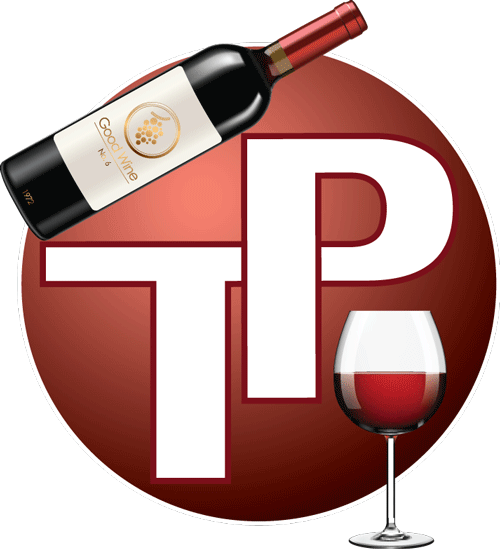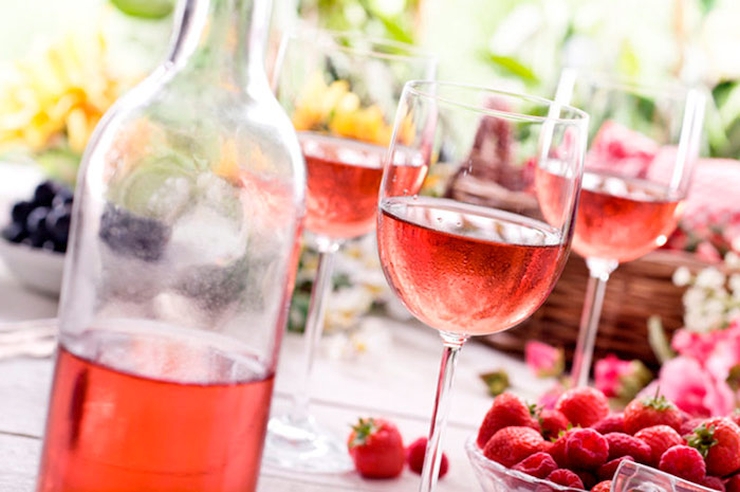In a previous article entitled Understanding the cycle of the vine, Terry Pomerantz described the painstaking work that winemakers and viticulturists put into making wine.
For rosé, although the aging process of the wine is quite short, the work of the vineyard craftsmen is just as careful as that given to the production of red and white wines.
Why is the wine rosé?
If you are wondering why the wine is pink, it is simply because the pigments in the grape skins are in contact with the grape juice for a short time, which creates shades of pink that are more or less dark.

What gives wine its pink colour?
But what is it that gives wine its pink colour? It’s not some mysterious alchemist’s concoction, far from it! For example, pinot noir has less red pigment than cabernet or syrah. In addition to the grape variety used, the ripeness of the grapes and the speed at which the winemaker presses them also play a role.
Made from Grenache, Cinsault or Mourvèdre grapes, a Provence rosé will generally be quite light in colour and give off aromas of apple, melon and small red berries. Rosés made from Bordeaux grape varieties (Cabernet, Merlot, Cabernet Franc), on the other hand, have a deep peony-pink hue with aromas of red and black fruits and floral notes.
Each rosé has its own characteristics. When a winemaker decides to make rosé and works each cycle of the vine accordingly, from growing the grapes to bottling them, the result can be amazing!
“To make a good rosé wine requires a very specialised know-how. Don’t be fooled: not all rosés are the same. There are some absolutely remarkable rosé wines, some of which, like the Bandol, can be kept for up to five years,” says Terry Pomerantz.
How is rosé wine made?
Even though rosé is the 2nd most popular wine in France, few of us know that there are 2 main ways to produce real rosé.
Direct Pressing
If you ask a Provencal winemaker how rosé wine is made in their country, they will tell you that most winemakers in Provence use the direct pressing method. The process consists of gently squeezing the red grapes in a press for a few minutes. The juice obtained is slightly pink.
Containing little tannin, Provence wines are designed to be refreshing. Indeed, the tannins in wine are polyphenols contained in the seeds and skins of the grapes. During the winemaking process, tannins help stabilise the wine and protect it from oxidation. Since rosé wines only contain a very small amount, they are not astringent.
Saignée (bleeding)
The saignée, or bleeding method, consists of leaving wine to macerate in a vat for a short time, from 12 to 48 hours at the most. The lightly coloured juice is then run off to separate it from the pigments and tannins contained in the skin of the red grapes. The winemaker then pours the juice into another tank for alcoholic fermentation.
Is gris de gris wine a rosé?
Gris de gris wine is obtained by vinifying grey grapes such as the Grenache gris, the emblematic grape variety of the Gulf of Lion, which is found along the coast of the Camargue.
Vin gris is distinguished by its very pale colour, the silvery nuances of which are revealed by the light. On the palate, grey wines reveal complex and smoky aromas dominated by notes of redcurrant, raspberry, peach or apricot. The fermentation time of grey wine before bottling is extremely short, only a few hours. Note that grey wine is not considered a rosé wine.

Terry Pomerantz’s rosés
“It’s still summer somewhere on Earth…” smiles Terry Pomerantz. “I love a good glass of rosé on a hot summer day. These wines gently introduce a dose of happiness to the heart. My favourite rosé wine was the Royal de Neuville, a sparkling rosé that my mother used to serve with dessert. The SAQ had been selling it since 1927 but took it off the shelves a few years ago. So, I turned to sparkling rosés like the Louis Bouillot Perle d’Aurore Crémant de Bourgogne, the Mumm Napa Brut for an American rosé, or an Italian like the Ferghettina Brut Rosé.”
“Come on, let’s not ask ourselves any more how rosé wine is made. Let’s toast together to the coming summer!”
An avid wine lover, Terry Pomerantz shares his love of fine bottles, guided by a responsible approach to the art of living. Discover his advice on food and wine pairing, his favorite bottles, and the ideal choices for each season and occasion. Immerse yourself in his passion and learn to fully appreciate each bottle in good company.


